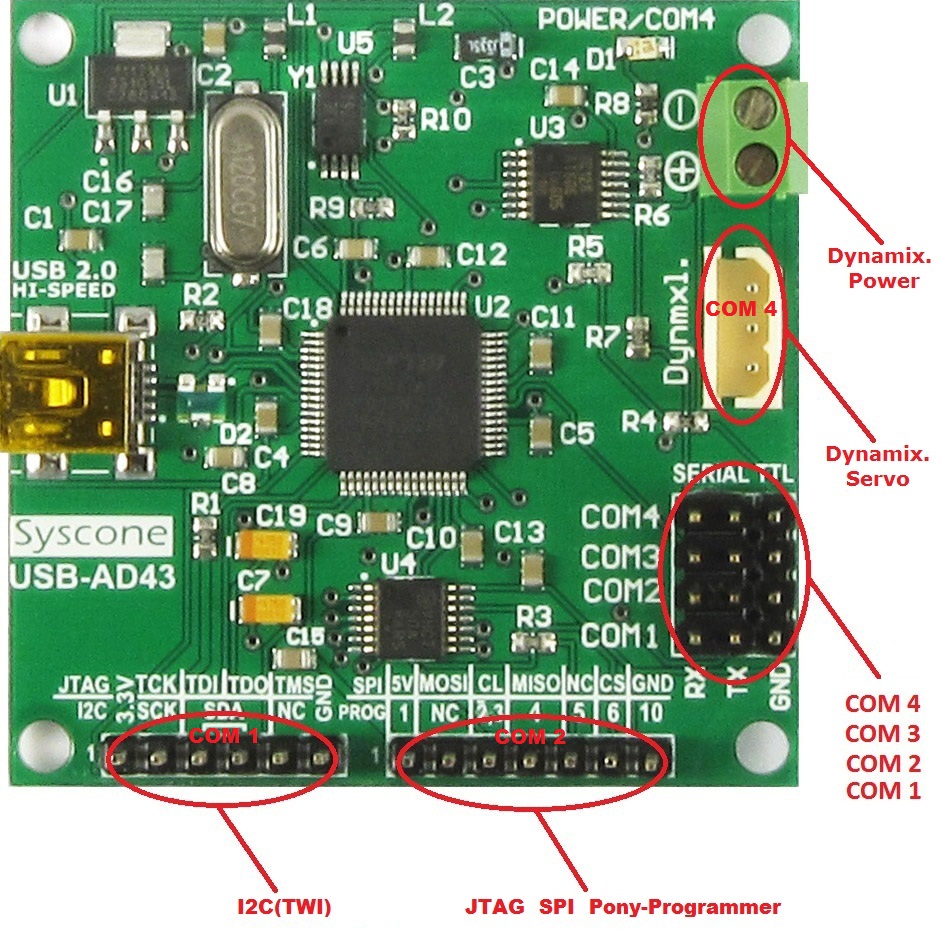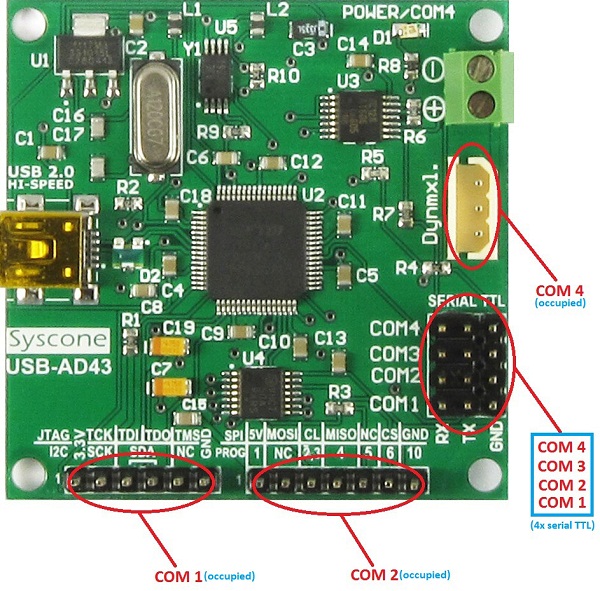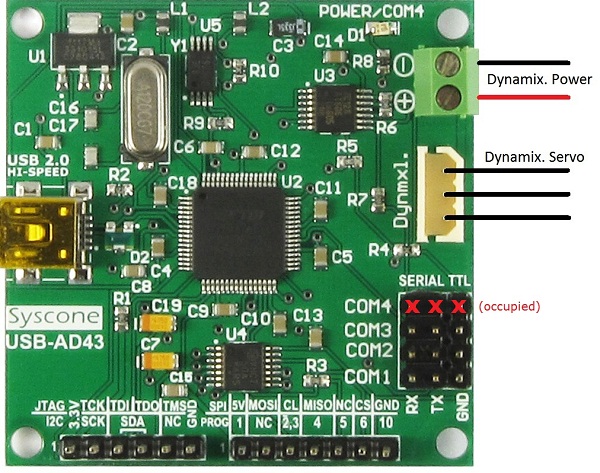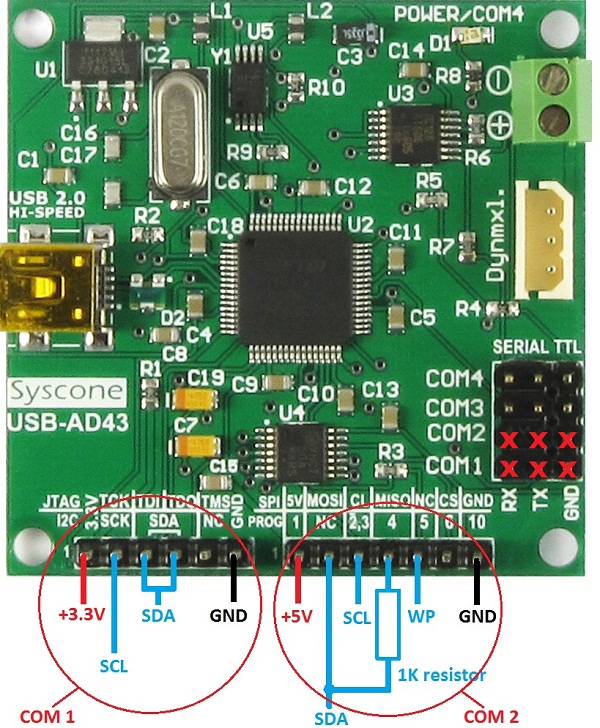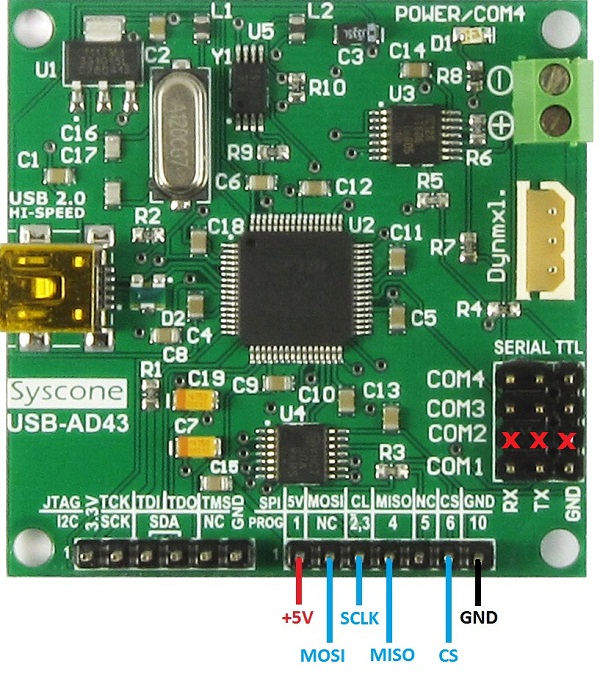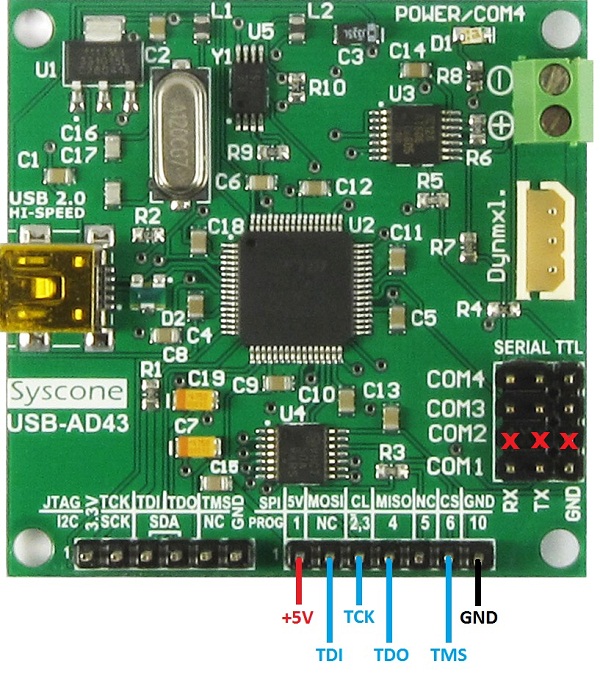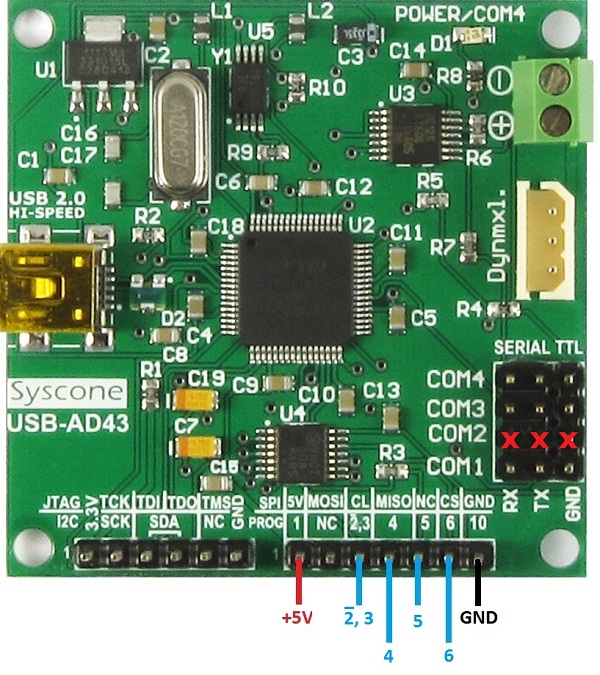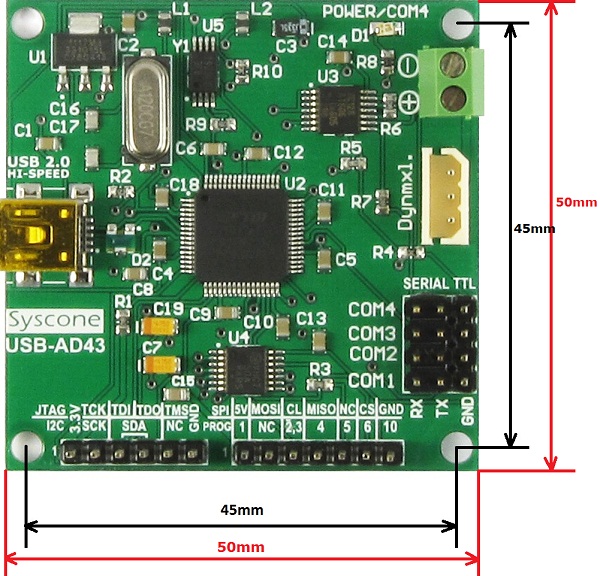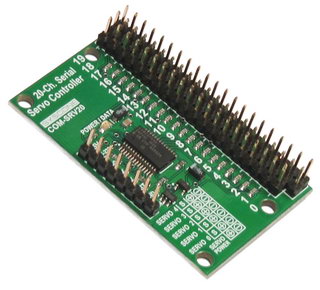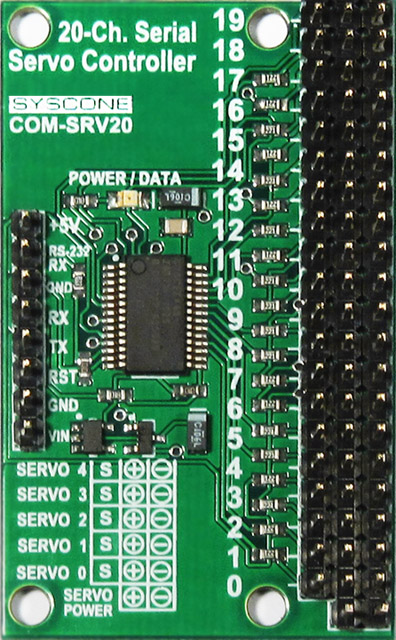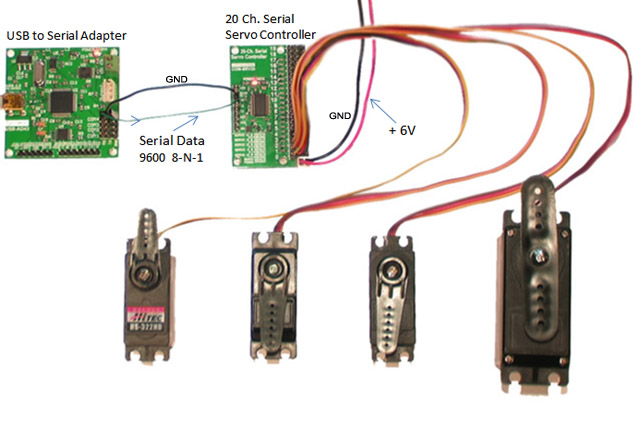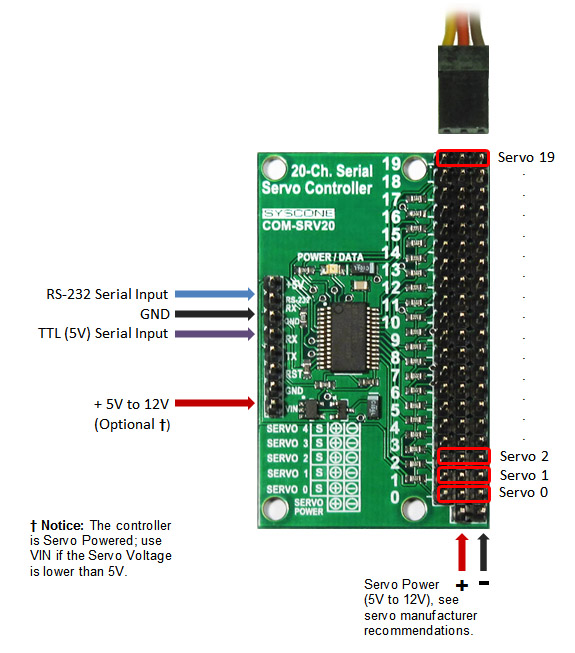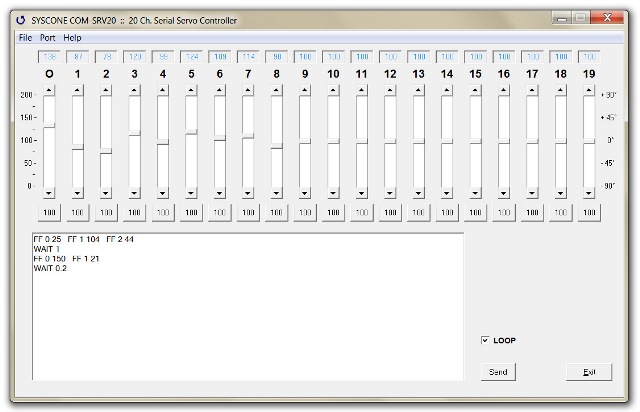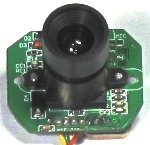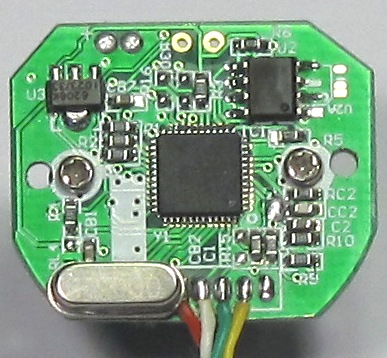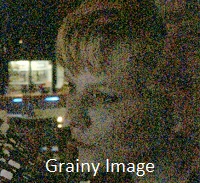P/N: USB-AD43
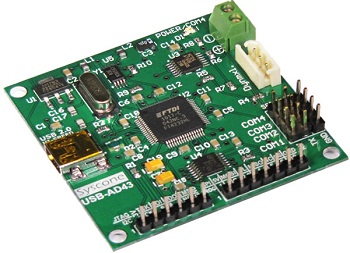
The universal adapter USB-AD43 allows your PC to communicate with Dynamixel / Bioloid bus devices (AX-12, AX-S1, IMU, etc), provides 4 serial(COM) ports with TTL levels(0-5V), I2C standard interface, SPI interface, JTAG interface, an Enhanced Bit-Bang Mode interface and a Pony Programmer adapter (the famous memory / microcontroler programmer), with complete driver support across Windows, Mac OS X (including both Intel and PPC), Linux and many other operating systems.
$39.95
Description
The USB to 4 serial ports adapter is great for connecting micro controller projects to a personal computer. It can be used also as a Dynamixel controller in projects that involve driving a servo and/or collecting signals from different modules such as a Sonar Range Finder, Compass, GPS modules, Barcode scanners, RFID readers, etc. used in a large variety of applications from robotics to industrial and medical.
The USB adapter’s drivers make it seem like a standard serial port to the operating system, allowing you to connect to all of your existing software, such as servo controller interface programs via USB port. Drivers are available for Windows 98 through Windows 7, Linux, and Mac OSX.
The USB-AD43 adapter is based on the FT4232H USB Hi-Speed(480Mb/s) Four Channel USB-UART IC (can be configured in several different modes depending on the application):
- USB to 4 channels UART(RS232/COM serial ports with TTL levels) or Bit-Bang interfaces.
- USB to Dynamixel adapter – in this mode the COM4/forth channel is configured as a Dynamixel interface(3 pins).
- USB to SPI interface – in this mode the COM2/second channel is configured as a SPI interface(5V levels).
- USB to JTAG interface – in this mode the COM2/second channel is configured as a JTAG interface(5V levels).
- USB to I2C interface – in this mode the COM1(3.3V levels) or/and COM2(5V levels) are configured as an I2C standard interface.
- USB to PonyProg adapter – in this mode the COM2/second channel is configured as a Pony Programmer interface.
(the other remaining channels can be used independently in various modes, and the same port can only be used for one interface at the time)
The Dynamix. Power will be connected to the external power supply (see servo manufacturer recommendations).
The Dynamix. Servos will be connected to the 3 pin (white) connector. NOTE: in this case COM 4 (Serial TTL port) will be occupied by the Dynamix. interface.
COM ports 1-4 (Serial TTL ports) are available for use, except when the port is used by other interfaces.
The I2C(TWI) interface (corresponding to COM 1) and the JTAG, SPI, Pony Programmer interface (corresponding to COM 2) are available for use, only if not simultaneously used by the corresponding Serial TTL port(COM1 or COM 2).
Specifications
- PCB size: 2″ x 2″ (50mm x 50mm)
- USB standard: USB 2.0 (full speed)
- Connector: USB mini-B
- Serial ports (COM): 4 (TTL levels)
- Data In voltage levels: 3.3 V (5 V tolerant)
- Maximum data rate: 12 Mbaud
- Power supply: USB powered(No external power required)
- Supply current(from USB port): 500 mA / 3.3V or 5V (see USB port limitations)
- Buffered outputs(TTL) current: 25 mA / each port (50 mA/total)
Pictures
Downloads
User Manual: USB-AD43.pdf
Drivers can be found at FTDI’s virtual COM port driver page: www.ftdichip.com/Drivers/VCP.htm
For JTAG .dll example/Source code: www.ftdichip.com/Projects/MPSSE/FTCJTAG.htm
For I2C .dll example/Source code click here: www.ftdichip.com/Projects/MPSSE/FTCI2C.htm
For SPI .dll example/Source code: www.ftdichip.com/Projects/MPSSE/FTCSPI.htm
This product or any variant of it is not intended for use in devices in which the failure of the product might reasonably be expected to result in personal injury.

